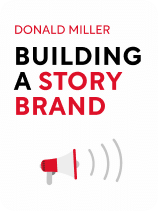

This article is an excerpt from the Shortform book guide to "Building a Storybrand" by Donald Miller. Shortform has the world's best summaries and analyses of books you should be reading.
Like this article? Sign up for a free trial here .
What is marketing noise? Why does marketing noise make it more difficult for marketing to succeed?
Marketing noise is the idea that the market is overfilled with information. Our brains cannot process all the information and it makes it difficult to make decisions.
Read more about marketing noise and why a lot of marketing doesn’t work.
Marketing Noise and How to Cut Through
If you find that your brand is stagnant, it probably isn’t because your product is flawed. It probably is because there’s a problem with the message you’re sending out in your marketing. The only thing customers care about is how your brand can solve their problems. As a result, marketing that’s unclear or confusing, that doesn’t explain how your product solves problems, or that is self-centered and obsesses about the company’s image, is doomed to fail. Here’s what marketing noise means.
Noise
Marketing noise is the massive amount of distracting, confusing information that permeates the world. An example of noise is the 3,000 marketing messages the average person is exposed to every day. While outside noise is something your brand will have to compete with, your biggest enemy is actually the noise your brand creates itself.
Brands often don’t realize they’re creating noise. They think that customers like hearing about their backstory, the non-profits they support, the eco-friendly features of their office building, and so on. But customers don’t care about any of these things. They just want to know how your brand will help them solve their problems.
For example, one StoryBrand client ran an industrial painting company that painted cars, concrete, and hospitals. The website was crowded with text that tried to explain all three arms of the businesses but ultimately just created noise. The author suggested starting over. The new website would have only a few words of text along the lines of “We Paint Stuff” and a button that said, “Request a Quote.”
How the Brain Works
Marketing noise is created because they don’t accommodate the way the human brain works. Subconsciously and by nature, the human brain is interested in things that will help us survive. This results in two behaviors:
Behavior #1: The brain focuses on things that will help it meet survival needs. According to Abraham Maslow, the brain prioritizes needs in this order:
- Nourishment—water and food.
- Security—shelter and feeling emotionally safe.
- Relationships—partners, lovers, and friends. They are a network of people (a tribe) who will help keep us safe, for example, by banding together into an army to fight off enemies.
- Meaning—spiritual, physiological, and psychological needs.
Behavior #2: The brain ignores anything that’s complicated because parsing complexity uses up energy and calories. Those calories could be better spent on something that will help with survival, such as finding food or a mate.

———End of Preview———
Like what you just read? Read the rest of the world's best book summary and analysis of Donald Miller's "Building a Storybrand" at Shortform .
Here's what you'll find in our full Building a Storybrand summary :
- How storytelling enhances brand marketing
- Why you should make the consumer the hero of your brand's story
- The 7 elements that make marketing work






